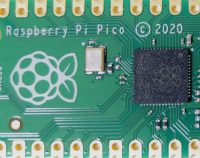SPI on the Raspberry Pi Pico The RP2040 has two independent SPI controllers (SPI0 / SPI1), available on the Raspberry Pi Pico from GP[0] to GP[27] pins. In this article, I tried to use this feature to connect the LCD display and read/write the EEPROM. Connecting the ATM0130B3 LCD The ATM0130B3 is a 240x(RGB)x240 1.3-inch full-color graphic LCD. This time, we used Akizuki’s control kit with 2.54mm pitch conversion board to connect it. The pitch conversion board also has a level conversion circuit, so it can be connected directly to the Raspberry Pi Pico. 1.3-inch full-color graphic LCD display Hardware connections The following figure shows the wiring between Raspberry Pi Pico’s I/O terminals and the ATM0130B3 conversion board. All the necessary components are mounted on the board. Connect the four SPI pins /CS, D/C, and RES, and the power supply and GND pins, respectively. Schematics Connection Software (Micro Python code)
Read more